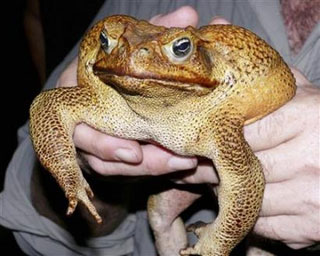 Not all amphibians are toast. From Mongabay:
Not all amphibians are toast. From Mongabay:
Poison arrow frogs appear to make special effort to avoid exposure to damaging ultraviolet-B radiation … The researchers found that the two species of frogs appear to be exhibiting UV-B avoidance behavior, with vocalizing frogs found at sites where UV-B levels were more than six times lower than average.
The ozone depletion problem is generally assumed to be under control for now, though I’m sure you can find scientists who would argue otherwise, especially if fame and wealth would result (as with the topic of global warming). A lot of people have confused the two largely unrelated issues. However, UV-B radiation levels are still elevated and are suspected to be a major factor in the present amphibian extinction crisis. If so, then there is hope that the amphibian extinction event may slow as UV-B radiation levels continue to drop:
“UV-B avoidance behavior may be particularly important for many Dendrobates species (including D. pumilio) that exhibit unusually prominent parental care by both males and females. Adults often transport developing tadpoles on their backs to suitable locations, and parents often continue feeding and monitoring offspring until metamorphosis,” explain the authors. “Adults’ sensitivity to UV-B levels may thus play an important indirect role in the survival of progeny through parental care.
“Interestingly, D. pumilio and D. auratus are two species for which there are no documented population declines, and D. pumilio are considered among the most abundant anuran species in the lowland forests of Costa Rica.”
One amphibian that seems to be impervious to everything is the cane toad. From Mongabay:
FrogWatch, an Australian environmental group, aims to end the species’ reign by capturing and killing all cane toads in the country. FrogWatch coordinator Graeme Sawyer told the Associate Press that captured toads are an excellent fertilizer.
“We kill them with carbon dioxide gas, stockpile them in a big freezer and then put them through a liquid fertilizer process” that renders the toads nontoxic, Sawyer said. “It turns out to be sensational fertilizer,” he added.
Here is some crappy video I took of these three species in Costa Rica. The hand model was, as usual, my oldest daughter:
We actually had to scoop frogs out of the pool to go swimming at night.
I saved the bad news for last, so you can just skip it and go back to work without getting all depressed if you want:
Chilling new evidence suggests amphibians may be in worse shape than previously thought due to climate change. Further, the findings indicate that the 70 percent decline in amphibians over the past 35 years may have been exceeded by a sharp fall in reptile populations, even in otherwise pristine Costa Rican habitats.
There are a number of snakes that specialize in eating frogs and other snakes that specialize in eating other snakes. You can see how ecosystems will unravel as more species start to go extinct.
Earlier this year scientists met in Atlanta to devise last minute plans to save disappearing amphibians from extinction. The group, which called itself the Amphibian Ark, aims to save threatened amphibians by asking zoos, aquariums, and botanical gardens to act as sanctuaries for disappearing frogs, salamanders, newts, and caecilians. [Speaking of caecilians, I saw my first one in the wild while in Costa Rica a few years back. At first I thought it was just a hyperactive night crawler. Sorry to interrupt your reading.] These facilities would serve as a proverbial “ark” to protect amphibians until scientists figure out a way to stop the killer chytrid fungus and other threats. While such efforts are already under way with a handful of species at the Bronx Zoo in New York (Kihansi Spray Toad) and the Houston Zoo (Panamanian Golden Frog), the expanded effort for hundreds of species is expected to cost $400-500 million.
Wow, a mere $40 million has been spent saving the California Condor. Speaking of which, Robert McClure over at the Seattle Times put up a short post about the twentieth anniversary of the capture of the last wild condor, which was on the 18th of this month. How serious are we about stopping this extinction event? Not serious enough to ban the use of lead ammunition. Lead poisoning is a major cause of death for these birds. Lead shot was banned long ago for hunting waterfowl because the hunters were afraid they would have fewer birds to hunt.
Lead poisoning from eating lead-poisoned birds can also lead to cognitive dysfunction. The average bird hunter IQ has gone up since lead was banned. I am joking — but the following is some evidence to support my hypothesis. According to Andrew Arulanandam, spokesman for the National Rifle Association, lead is the bullet of choice because it kills prey “in a more humane way.”
 Not all amphibians are toast.
Not all amphibians are toast. 

